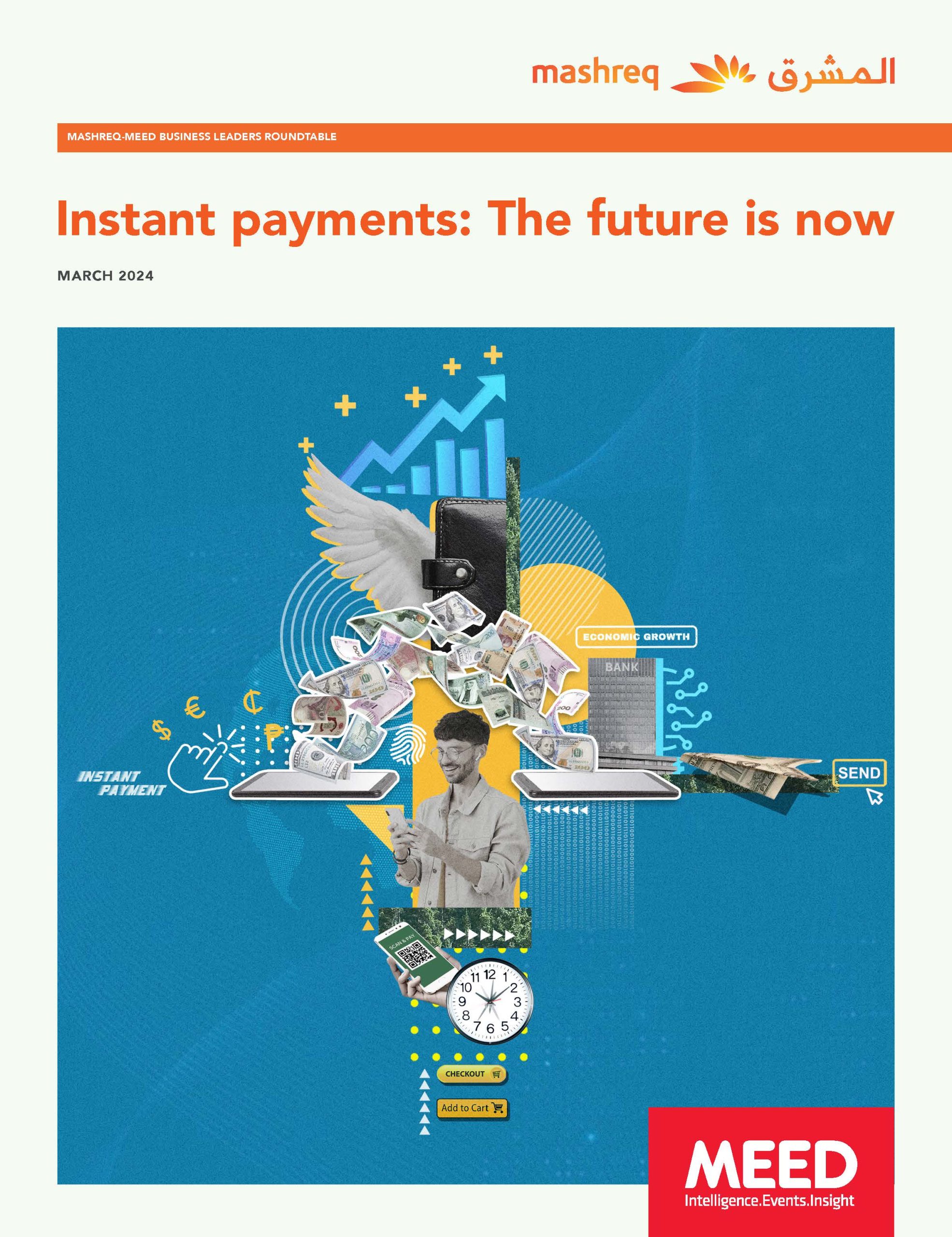Transitioning to integrated payments

How embedding financial products across your customer journeys is paving the way for an enhanced and frictionless experience
By Fernando Pacheco, senior vice president, head of cash management products, global transaction banking at Mashreq
Significant potential
Consumers and businesses are increasingly seeking solutions to streamline their banking activities in today’s dynamic financial landscape.
In response, banks are pioneering innovative approaches to deliver seamless financial services that transcend traditional methods.
They are introducing emerging technologies that help clients establish their own digital ecosystems to keep pace with the industry’s transformation.
Among these innovations, embedded finance—or embedded banking—is gaining momentum, reshaping how everyone engages with financial services in their daily transactions.
Ernst & Young (EY) forecasts that the market size of global embedded finance across the entire value chain will grow from $264bn in 2021 to $606bn by 2025.
This growth amplifies the transformative potential of embedded finance, which allows businesses to integrate financial services such as lending, payment processing, insurance and investments into non-financial business platforms with rapid efficiency.
According to business intelligence platform Economist Impact, nearly two out of five banks foresee becoming true digital holistic ecosystems, offering both their own and third-party products and services.
Application programming interfaces (APIs) are crucial in this shift, allowing financial firms to connect with non-financial companies seamlessly, and ensuring smooth data and payment transfers.
More open API platforms and customised front-end technologies, including user-friendly mobile applications and personalised interfaces, are making it increasingly convenient for FinTechs to partner with brands.
Additionally, the rise of cloud computing, advanced digital architecture and the widespread use of handheld devices support rapid scaling and real-time data exchange, and can enhance connectivity between brands and customers.
While this integration enables businesses to offer tailored and accessible financial solutions within their platforms, it also provides new avenues to generate revenue, diversifying income sources beyond core products and services.
Market impact
As consumers increasingly embrace these solutions, embedded payment systems, which permit users to complete transactions directly on the platform without the need for external payment systems or redirects, continue to rise in popularity.
Prominent applications such as Google Pay, Apple Pay and Venmo offer these features, enabling users to carry out transactions using their existing credentials within a single app.
Moreover, access to a range of other embedded finance models offers customers and businesses multiple choices for integrating payment services, thereby restructuring payment processes.
For instance, the buy-now-pay-later (BNPL) business model integrates lending into e-commerce checkouts, splitting a purchase into equal instalments, starting with the first at checkout.
According to market research company Juniper Research, the BNPL model is projected to account for over 50% of the embedded finance market by 2026, following its rapid adoption globally.
Global examples include Sweden’s Klarna, which offers four interest-free instalments; Australia’s Afterpay, which allows shoppers to spread costs over six instalments; and the US-based Affirm, which provides payment options with four bi-weekly or monthly repayments.
The embedded lending model addresses other financial requirements, fuelling market growth by allowing businesses to seamlessly offer accessible loans directly through their platforms.
This integration provides quick, convenient and customised loan options, simplifying the borrowing process, and enhancing customer satisfaction and financial inclusivity.
Overall, the market is rapidly accelerating as prominent companies adopt integrated payment methods and expand their portfolios with embedded finance.
For example, Uber enables its drivers to open bank accounts within the app, consolidating their finances and allowing those without bank accounts to start their own businesses.
Similarly, Tesla has eliminated the need for drivers to seek alternative insurance by offering embedded insurance services to all vehicle purchasers.
An EY survey reveals that global FinTech leaders anticipate offering over half of financial services via non-financial services platforms soon. Additionally, 94% of these leaders believe that success hinges on the ability of financial products to meet consumers’ real-time needs.
Challenges
Despite its transformative potential, embedded finance tends to pose greater challenges in managing risks effectively and ensuring compliance with regulations.
When financial services are added to platforms that are not traditionally financial in nature, it becomes complicated to determine who is responsible for what, especially during data privacy breaches. This means that ensuring accountability and protection can be very challenging when sensitive financial information is involved.
Additionally, the complex business environment of embedded finance, including embedded lending, could bring significant challenges.
Banks providing loans through these platforms may struggle to engage directly with borrowers, complicating the loan recovery process.
Moreover, traditional banks risk losing market share to non-financial companies offering competitive financial services. Effective partnerships are essential, yet progress can be stalled by poor collaboration between financial institutions and API providers.
Regional adoption
According to a global consultancy Roland Berger report, the embedded FinTech market in the GCC region is projected to grow from $250m in 2022 to about $2bn by 2030, representing an annual growth rate of around 30%.
This widespread adoption is driven predominantly by changes in customer behaviour, digitisation and regulatory support.
Digitisation enables companies to provide financial products without the need to build their own infrastructure by leveraging banking-as-a-service (BaaS).
This approach allows businesses to integrate financial services quickly and efficiently, utilising existing banking systems and technologies.
Additionally, regulatory initiatives such as open banking drive innovation and ensure secure data sharing. These regulations require banks to share customer data with third parties through APIs, fostering a more competitive and innovative financial ecosystem.
Presently, a considerable number of regional companies have solidified their presence in the embedded finance market.
Popular examples are food delivery apps such as Talabat and Noon. These platforms allow users to make payments without switching between apps.
Similarly, the region’s leading ride-hailing platform, Careem, has integrated payment solutions and offers digital wallets, enabling users to pay for rides and food delivery and access other financial services seamlessly.
Saudi Arabia-based BNPL platform Tamara and the UAE’s Tabby are two ‘unicorn’ startups allowing customers to defer purchases across four interest-free monthly instalments. These platforms have been integrated into several local brands, further simplifying consumer payments.
Regulatory bodies are also actively shaping the industry landscape. Bahrain was the first in the GCC to implement open banking, with the Central Bank of Bahrain (CBB) introducing the Bahrain Open Banking Framework (Bahrain OBF) in late 2020.
This move set a precedent for other regional regulators, including the Saudi Arabian Monetary Authority (Sama), which established an Open Banking sandbox allowing local and international companies to test new digital solutions in a live setting.
Earlier this year, the Central Bank of the UAE introduced new regulations for BNPL services to monitor companies and protect consumers.
The rules require entities to be licensed or partner with licensed banks to prevent predatory practices and encourage responsible lending. Key provisions include a maximum credit limit and a three-year licence period.
With BNPL purchases growing significantly, the new framework is expected to stimulate long-term industry growth.
Additionally, the Central Bank’s comprehensive regulatory framework for open finance underscores its commitment to fostering innovation and competition.
The UAE’s Financial Infrastructure Transformation Programme (FIT Programme), launched in 2023, further accelerates the digital transformation of the financial sector, with initiatives such as an instant payment platform, central bank digital currency and open finance.
Overall, the GCC region’s embedded FinTech market is set for sustained growth, driven by technological advancements, consumer demand and a supportive regulatory environment. These dynamics position it as a frontrunner in the digital financial services landscape.




